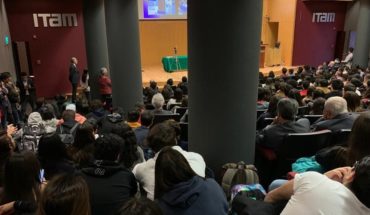
A recent global marine pollution operation, coordinated by Interpol and Frontex in Europe, has brought to light 1,600 environmental crimes, many of them related to the illegal waste market. One of the results has been the arrest of 22 suspects linked to a criminal plastic waste trafficking network between Europe and Asia.
In OECD countries, more than 1.7 billion tonnes of plastic waste were illegally sent to third countries by intermediaries or “runners” in 2020 alone.
Plastic consumption worldwide reached 360 million tonnes in 2018. Waste generation is so important that its energy recycling or recovery generates a market with an expected turnover by 2022 of more than $50 billion. In the European Union (EU), 25 million tonnes of plastic waste are generated each year, but only 30% are recovered for recycling.
The export of these wastes to EU or non-EU countries is an option that is provided for and permitted by European law, provided that there is strong evidence that material recovery is carried out under conditions equivalent to those marked by EU law.
However, the final operational management of these plastic wastes (energy recycling and recovery) in countries that encourage this type of management entails costs and payments of fees and taxes. This in turn generates a black market to increase profits by avoiding expenditures.
Major changes in plastic waste exports to Asia since January 2018.
Interpol
Why there is a black market for waste
The reasons for this illegal trade are several, but they basically focus on three:
Obtaining benefits from a raw material avoiding the costs of proper treatment.
The price of recycled plastic is not competitive with that of virgin plastic when the price of oil is relatively low. This is an incentive to eliminate it through third countries.
There is a significant surplus in the generating market and lack of traceability, because of a clear gap between the supply and demand of recycled plastics.
Illegal shipments are favored by low control at ports of departure and export licences for plastic materials, when it is actually plastic waste (fraudulent declarations).
Waste ends up in countries where it is processed illegally: either it is burned in energy installations, either dumped directly or, at best, a false industrial fabric is formed, illegal, for recycling plastics without the relevant health control or the labour used.
More landfill fires
Following increased import controls in traditionally receiving countries of this waste, with a surplus in their production, southern European countries reported increased plastic waste fires in treatment plants and landfills (Fig.2).
In particular, the Spanish administration has also observed an increase in fires in landfills and waste treatment centers in order to eliminate the waste accumulated in the camps and warehouses of some recyclers.
Spain used to export almost 60% of its plastic waste to China and, now that the Asian country does not allow entry, recycling centres do not have the capacity to recycle all plastic that is no longer exported. It has been estimated that from 2017 to 2018, incidences of waste fires in Spain increased by 100%.
Types of illegal plastic waste treatment activities since January 2018.
Interpol
Solutions to improve plastics management
The current situation is complex. There is greater control over these criminal acts. Southeast Asian countries, traditionally importers of plastic waste, are no longer, at least in the same quantities. People are encouraged to increase their contribution to recycling, and it is true that the recovery of plastic materials is on the rise, but the recycling industry is unable to assimilate all waste.
This leads mafias to look for new destinations or illegal “markets”. The transfer of this waste to new countries such as Turkey, and even within the EU to Bulgaria, Romania and Poland, has been observed. There they are used in energy production plants as an alternative fuel with savings of about 40 euros/burnt plastic t uncontrolled.
The solutions to this situation are part of three areas:
1. Techniques:
Reduce or eliminate the manufacture of non-recyclable or hardly recyclable plastics, such as single-use plastics, and promote biodegradable alternative materials.
Increase the quality of recovered materials, improving selective collection systems and efficiency in sorting plants.
2. Economic:
3. Policies:
Address illegal imports, based on the amendment of the Basel Convention, an international treaty on the control of transboundary movements of hazardous wastes and their disposal signed by 180 countries. The aim is to make export rules stricter and force waste trade operators to seek the consent of the government of the receiving country for export.
Several ambitious objectives have been adopted within the EU. Ten million tons of recycled plastics will be used in new products by 2025. By 2030, 55% of plastic packaging waste will be recycled. Beverage bottles must contain a minimum of 30% recycled content.
All of these measures and more that are emerging will help narrow and eliminate the gap between supply and demand. Thus, they will make illegal treatment of plastic waste more difficult for mafias and de-learners.
The challenge is complicated and consumers also need to make our efforts to change consumption patterns so that certain plastic products stop being consumed and manufactured.
José Vicente López, Researcher in the Department of Forestry and Environmental Engineering and Management, Polytechnic University of Madrid (UPM)
This article was originally published in The Conversation. Read the original.





